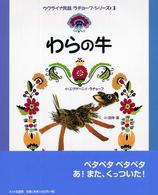- ホーム
- > 洋書
- > 英文書
- > History / World
Full Description
Now notorious for its aridity and air pollution, Mexico City was once part of a flourishing lake environment. In nearby Xochimilco, Native Americans modified the lakes to fashion a distinctive and remarkably abundant aquatic society, one that provided a degree of ecological autonomy for local residents, enabling them to protect their communities' integrity, maintain their way of life, and preserve many aspects of their cultural heritage. While the area's ecology allowed for a wide array of socioeconomic and cultural continuities during colonial rule, demographic change came to affect the ecological basis of the lakes; pastoralism and new ways of using and modifying the lakes began to make a mark on the watery landscape and on the surrounding communities. In this fascinating study, Conway explores Xochimilco using native-language documents, which serve as a hallmark of this continuity and a means to trace patterns of change.
Contents
Introduction; 1. Ecological and Political Landscapes; 2. Land; 3. Canoes and Commerce; 4. Demography and Society; 5. Crisis in the Seventeenth Century; 6. Late-Colonial Watersheds; 7. Nahuatl Sources from Xochimilco; Conclusion; Glossary; Bibliography; Index.







